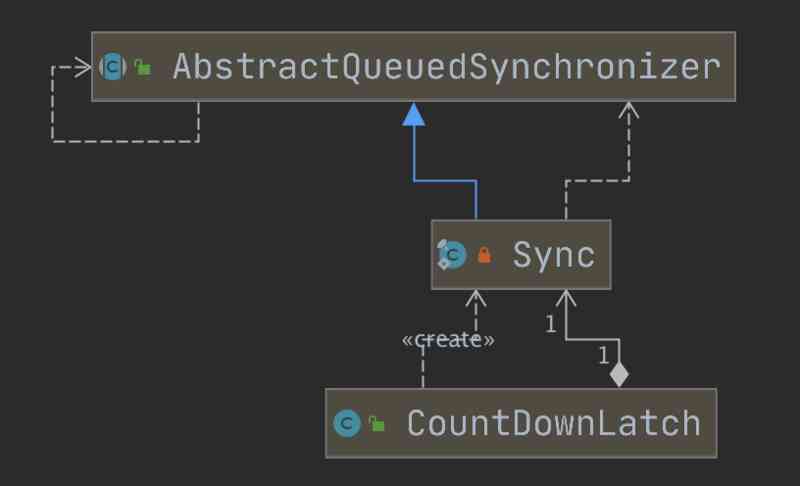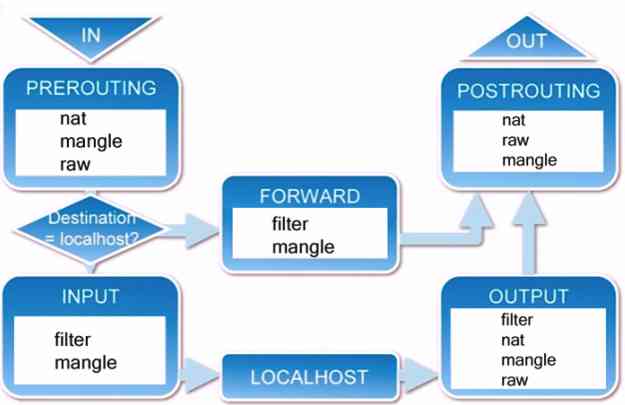PrefaceCountDownLatch A synchronization aid , Again based on AQS Realization , This paper mainly introduces CountDownLatch Use , And source code .
official account :『 Liu Zhihang 』, Record the skills in work study 、 Development and source notes ; From time to time to share some of the life experience . You are welcome to guide !
Introduce
A synchronization aid , Allow one or more threads to wait , Until a set of operations performed in other threads is complete
One CountDownLatch Initialize to the given count . stay await Methods block , call countDown Method will reduce the count until it reaches zero , After that, all waiting threads are released , Any subsequent calls await Will return to . It's a one-off phenomenon - The count cannot be reset . If you need a version to reset the count , Please consider using CyclicBarrier .
CountDownLatch Is a general synchronization tool , It can be used for many purposes .
- Used as a simple opening / Turn off the latch , Or the door : All thread calls await Wait at the door , Until it's called countDown The thread opens .
- The initialization count is N , Wait with a thread , until N Threads complete an operation , Or something has been done N Time .
CountDownLatch One useful attribute is , It doesn't require calling countDown The thread waits until the count reaches zero , It just prevents any thread from passing through await , Until all threads can pass through .
Basic use
Before me CAS That article 《 from JUC Source code to see CAS, I took a note ......》 Described in the CAS For example, the CountDownLatch, The code is as follows :
public class CasTest {
private static final CountDownLatch LATCH = new CountDownLatch(10);
private static int NUM_I = 0;
private static volatile int NUM_J = 0;
private static final AtomicInteger NUM_K = new AtomicInteger(0);
public static void main(String[] args) throws InterruptedException {
ExecutorService threadPool = Executors.newFixedThreadPool(10);
for (int i = 0; i < 10; i++) {
threadPool.execute(new Runnable() {
public void run() {
for (int j = 0; j < 10000; j++) {
NUM_I++;
NUM_J++;
NUM_K.incrementAndGet();
}
LATCH.countDown();
}
});
}
LATCH.await();
System.out.println("NUM_I = " + NUM_I);
System.out.println("NUM_J = " + NUM_J);
System.out.println("NUM_K = " + NUM_K.get());
threadPool.shutdown();
}
}Briefly introduce the main logic and function of this code :
- CountDownLatch The initialization count is 10 .
- open 10 Three threads to process business logic , The end of business logic calls LATCH.countDown() To count -1 operation .
- stay LATCH.await() It's blocking and waiting , until LATCH The value of is 0 , namely 10 All thread services are finished .
- Then the main thread continues to execute .
Question question
- CountDownLatch and AQS What does it matter ?
- CountDownLatch What is the implementation principle of ?
Source code analysis
The basic structure

You can see from the class diagram that ,CountDownLatch There is a static class inside Sync, and Sync Inherited AbstractQueuedSynchronizer. How is the specific internal realization , Then the following through the source code and drawing step by step to introduce .
initialization
public CountDownLatch(int count) {
if (count < 0) throw new IllegalArgumentException("count < 0");
this.sync = new Sync(count);
}By initializing the constructor, you can see that , stay new When you create an object, you must pass a int Non negative number of type . The implementation logic shows that , Is to create a Sync object .
private static final class Sync extends AbstractQueuedSynchronizer {
private static final long serialVersionUID = 4982264981922014374L;
Sync(int count) {
setState(count);
}
int getCount() {
return getState();
}
} I was introducing AQS The source code has introduced state The meaning of ,state It means different meanings in different subclasses .
- stay ReentrantLock in state It stands for lock state ,0 No thread gets lock , Greater than or equal to 1 A thread has already acquired a lock , Greater than 1 Indicates that the thread that obtained the lock has re entered multiple times .
- stay ReentrantReadWriteLock in state Represents the state of the lock .state by 0 , No thread holds lock ,state The height of 16 Represents the read lock state , low 16 Represents the write lock state . The actual value of the read-write lock can be obtained by bit operation .
- And in here, (CountDownLatch) It represents the value of the latch or count .
countDown
public void countDown() {
sync.releaseShared(1);
}Decrement of latch count :
- If the current count is greater than zero , Then decrease .
- If the count reaches zero , Then release all waiting threads .
- If then the current count equals zero, there's no reaction .
Called here AQS Of releaseShard() Method , Free up shared resources .
// AQS Code
public final boolean releaseShared(int arg) {
if (tryReleaseShared(arg)) {
doReleaseShared();
return true;
}
return false;
}
stay AQS In the method of releasing shared resources tryReleaseShared(arg) Part of it is in CountDownLatch The inner class of Sync Implemented in , The code part is as follows :
protected boolean tryReleaseShared(int releases) {
// Decrement count; signal when transition to zero
for (;;) {
int c = getState();
if (c == 0)
return false;
int nextc = c-1;
if (compareAndSetState(c, nextc))
return nextc == 0;
}
}Decreasing update state , If state by 0 Then return to false, Otherwise return to true .
At this point, check with the above AQS Code , Find out : If tryReleaseShared return true , The subsequent nodes will be awakened to start the operation . So that is to say , If state Not for 0, The subsequent nodes will not be awakened , until state by 0 .
await
public void await() throws InterruptedException {
sync.acquireSharedInterruptibly(1);
}Causes the current thread to wait , Until the latch counts down to zero , Unless the thread is interrupted .
- If the current count is zero , This method immediately returns .
If the current count is greater than zero , The current thread is used for thread scheduling purposes , One of the two things that you disable and remain dormant occurs :
- Because of the call countDown Method to make the count reach 0;
- Some other threads interrupt the current thread .
public final void acquireSharedInterruptibly(int arg)
throws InterruptedException {
if (Thread.interrupted())
throw new InterruptedException();
if (tryAcquireShared(arg) < 0)
doAcquireSharedInterruptibly(arg);
}AQS Defined tryAcquireShared The return value is divided into 3 Kind of :
- Less than 0: It means failure ;
- be equal to 0: Indicates that the shared mode has successfully obtained resources , However, subsequent nodes cannot succeed in shared mode ;
- Greater than 0: Indicates that the shared mode has successfully obtained resources , Subsequent nodes may also succeed in sharing mode , under these circumstances , Subsequent waiting threads must check availability .
among tryAcquireShared By the same CountDownLatch The inner class of Sync To realize , The internal logic is mainly judgment state Value , Go back .
In the internal implementation, the only value returned is 1 and -1 , Description in state == 0 when , return 1 , Wake up the subsequent nodes . It's not equal to 0 when , It will block .
protected int tryAcquireShared(int acquires) {
return (getState() == 0) ? 1 : -1;
}summary
Q: CountDownLatch and AQS What does it matter ?
A: CountDownLatch Is based on AQS The shared mode of .
Q: CountDownLatch What is the implementation principle of ?
A: You can refer to the source code analysis above , Summarize and introduce . CountDownLatch Is based on AQS Sharing mode realizes , The count must be passed in at initialization time , The count is actually AQS Of state value . stay countDown When the state Go down , stay When state by 0 when Will wake up AQS All the waiting nodes in the queue ( Because it's sharing mode ). and await The way is to judge state Value , If not 0 , Then all threads are blocked in the queue , Waiting to wake up .
Q: state What is the meaning of "Representation" ?
A:
- stay ReentrantLock in state It stands for lock state ,0 No thread gets lock , Greater than or equal to 1 A thread has already acquired a lock , Greater than 1 Indicates that the thread that obtained the lock has re entered multiple times .
- stay ReentrantReadWriteLock in state Represents the state of the lock .state by 0 , No thread holds lock ,state The height of 16 Represents the read lock state , low 16 Represents the write lock state . The actual value of the read-write lock can be obtained by bit operation .
- And in here, (CountDownLatch) It represents the value of the latch or count .
Conclusion
This paper mainly introduces CyclicBarrier In a common way , Through source code , Analyze how to achieve the barrier and loop effect . Wrong place , Please correct more .
Related information
- Java SE API :https://docs.oracle.com/javas...







